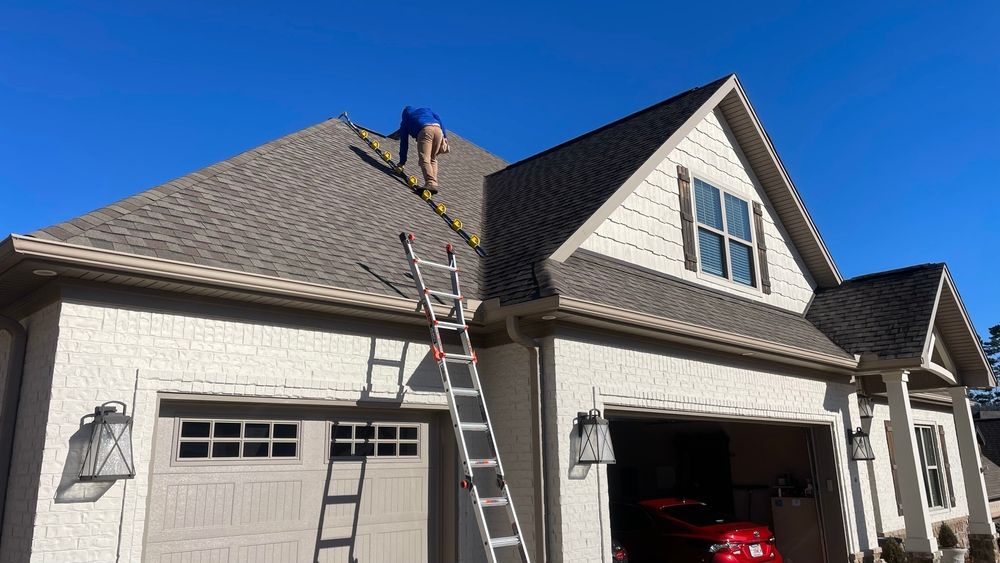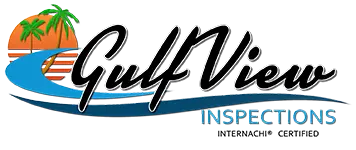You are about to make one of your life’s most important financial decisions. A buyer’s home inspection checklist helps you move forward confidently instead of uncertainly.
 According to the American Society of Home Inspectors, nearly 75% of homebuyers who skip a thorough inspection face unexpected repairs within the first year. The National Association of Realtors reports that inspection-related negotiations occur in more than 60% of home sales, showing how critical inspections are to protecting your investment.
According to the American Society of Home Inspectors, nearly 75% of homebuyers who skip a thorough inspection face unexpected repairs within the first year. The National Association of Realtors reports that inspection-related negotiations occur in more than 60% of home sales, showing how critical inspections are to protecting your investment.
By carefully reviewing each part of the home, you gain clarity about its condition and avoid costly surprises. At Gulf View Inspections, we provide a detailed, honest, and actionable buyer home inspection checklist so you can confidently protect your investment. Your inspection delivers peace of mind every step of the way.
Key Takeaways
- Inspect exterior elements like roof, foundation, siding, and drainage to identify structural issues before purchase.
- Test all interior systems, including electrical, plumbing, and HVAC, to avoid unexpected repair costs later.
- Check safety features such as smoke detectors, GFCI outlets, and emergency exits for code compliance.
- Document all findings thoroughly to strengthen your negotiating position for repairs or price adjustments.
- Review the inspection report with your agent to make an informed final purchase decision.
Essential Exterior Elements to Examine Before Buying
When using your buyer home inspection checklist, start outside the home and work inward. The exterior protects the property’s core structure, demanding close attention.
Look for missing or damaged shingles and worn flashing, often leading to leaks. According to the National Roofing Contractors Association, roof repairs due to weather damage cost homeowners an average of $7,000. Next, the foundation must be inspected for cracks or settling, which the Foundation Performance Association links to over 30% of major structural problems in homes.
Check the siding for signs of rot, mold, or peeling paint that can weaken the weather barrier. Test the windows and doors to confirm they open properly and seal tightly. Finally, review the landscaping and drainage to ensure water moves away from the foundation, preventing moisture damage. This careful exterior inspection helps protect your investment before you buy.
Critical Interior Systems That Demand Your Attention
Your buyer home inspection checklist should include a detailed review of the home’s key interior systems that affect safety, comfort, and future costs. During a residential home inspection, focus on these steps:
- Examine electrical panels, outlets, and switches for proper grounding and signs of outdated wiring that could pose hazards.
- Test plumbing fixtures throughout the home, checking water pressure and drainage, and looking for leaks below sinks and around toilets.
- Assess the HVAC system by running heating and cooling functions and requesting records of maintenance and repairs.
- Review the interior layout for smooth flow and adequate ventilation in kitchens and bathrooms to prevent moisture buildup.
- Inspect walls and ceilings carefully for water stains, cracks, or signs of structural settling.
- Don’t forget the attic and basement, as these spaces often reveal insulation issues, moisture damage, or pest activity that many miss.
Using this buyer home inspection checklist will give you the confidence to protect your investment.
Foundation and Structural Components You Cannot Overlook
A solid foundation is the backbone of your investment. When using your buyer home inspection checklist, give extra attention to these structural elements.
 Start with the foundation perimeter, looking for cracks indicating settling or water damage. Pay close attention to horizontal cracks, stair-step patterns in block foundations, and gaps wider than a quarter-inch. These signs can affect the home’s stability and should be evaluated by a professional.
Start with the foundation perimeter, looking for cracks indicating settling or water damage. Pay close attention to horizontal cracks, stair-step patterns in block foundations, and gaps wider than a quarter-inch. These signs can affect the home’s stability and should be evaluated by a professional.
Inspect load-bearing walls for any bowing, sagging, or stress points. Check floor joists in basements or crawl spaces for rot, insect damage, or improper alterations. Walk across floors to identify bouncing, squeaking, or uneven areas that may reflect structural issues.
Windows and doors that stick or fail to close correctly indicate foundation movement. Careful documentation during your residential home inspection will help you confidently protect your investment.
Electrical and Plumbing Red Flags Every Buyer Should Know
Since electrical and plumbing systems operate behind walls and beneath floors, they’re often overlooked until problems surface. Yet, they represent two of the most critical safety and functionality concerns in any home purchase.
You’ll want to identify electrical hazards like exposed wiring, outdated panels, or non-functioning GFCI outlets in bathrooms and kitchens. Test every switch and outlet systematically. For plumbing, search for plumbing leaks under sinks, around toilets, and in basements. Check water pressure throughout the home and inspect visible pipes for corrosion.
| System | Warning Signs | Immediate Actions |
| *Electrical | Flickering lights, burning smells, warm outlets | Request a professional evaluation |
| Plumbing | Water stains, low pressure, unusual sounds | Test all fixtures thoroughly |
| Both | Outdated components, code violations | Factor replacement costs into the offer |
HVAC Performance and Energy Efficiency Assessment
Heating and cooling systems account for nearly half of a typical home’s energy use, making HVAC performance a key part of your buyer home inspection checklist.
Start by testing heating and cooling functions. Listen closely for unusual noises like rattling or grinding that could indicate mechanical issues. Check air filters; dirty or clogged filters can lower efficiency and signal poor upkeep.
Inspect ductwork carefully for gaps, disconnections, or damage that allows conditioned air to escape. Verify that airflow is steady from all vents and that thermostats respond accurately to temperature changes.
Record the system’s age and maintenance history. Older units can benefit from upgrades to save on energy costs. Taking these steps helps protect your comfort and reduce long-term expenses.
Safety Features and Code Compliance Verification
Five critical safety features require immediate attention during your inspection: smoke detectors, carbon monoxide detectors, GFCI outlets, handrails, and emergency exits.
You’ll want to test each smoke and carbon monoxide detector by pressing the test button—they should emit a loud, clear sound. Also, check that GFCI outlets reset properly in bathrooms, kitchens, and outdoor areas where water exposure occurs.
Examine handrails for secure mounting and proper height, especially on staircases and raised decks.
Verify that emergency exits aren’t blocked and windows open easily from inside. Current safety regulations require specific placement and functionality standards for these features.
Code compliance issues can delay closing or create liability concerns. Document any deficiencies you uncover, as these represent both safety risks and potential negotiation points with sellers.
Florida-Specific Inspection Priorities for Coastal Properties
Inspecting coastal properties in Florida involves challenges that go beyond standard home inspections. Your buyer home inspection checklist should include a close examination of coastal erosion around the property’s perimeter. Look for shoreline retreat or land loss that could affect the home’s stability.
 Flood risk requires careful review of flood zone designations, elevation certificates, and drainage systems designed to manage storm surges. Check seawalls, bulkheads, and other coastal barriers for signs of wear or damage. Ensure HVAC units are installed above flood levels and electrical panels meet coastal building code requirements. Gulf View Inspections specializes in these unique coastal concerns, providing the clarity you need to confidently protect your investment.
Flood risk requires careful review of flood zone designations, elevation certificates, and drainage systems designed to manage storm surges. Check seawalls, bulkheads, and other coastal barriers for signs of wear or damage. Ensure HVAC units are installed above flood levels and electrical panels meet coastal building code requirements. Gulf View Inspections specializes in these unique coastal concerns, providing the clarity you need to confidently protect your investment.
Leveraging Professional Inspection Reports for Negotiation Power
A buyer home inspection checklist is a valuable negotiation tool when paired with a well-organized professional home inspection report. Grouping findings into categories such as safety concerns, significant repairs, and routine maintenance helps focus discussions on what matters most.
Highlight critical issues first, like electrical hazards or structural damage, which usually require immediate action from the seller. Document these with photos and contractor estimates to show the potential financial impact clearly.
Request repairs for safety items, credits for major system updates, and allowances for cosmetic fixes. Following this method puts you on equal footing with experienced buyers who recognize that careful documentation turns inspection reports into strong negotiation tools that protect their investment.
Conclusion: Your Buyer Home Inspection Checklist is Your Best Investment Shield
You have now equipped yourself with a buyer home inspection checklist that transforms you from a vulnerable buyer into a confident property detective. This checklist acts as your financial shield against costly surprises hiding in every corner, wire, and pipe. Avoid closing on any property without carefully reviewing every item included here. This detail-focused approach will save you from headaches and expenses down the road.
When you are ready to take the next step, trust Gulf View Inspections to provide thorough, professional residential home inspections that give you clarity and confidence. Contact us today at (941) 465-8638 or email contact@gulfviewinspections.com to schedule your inspection and protect your investment.
